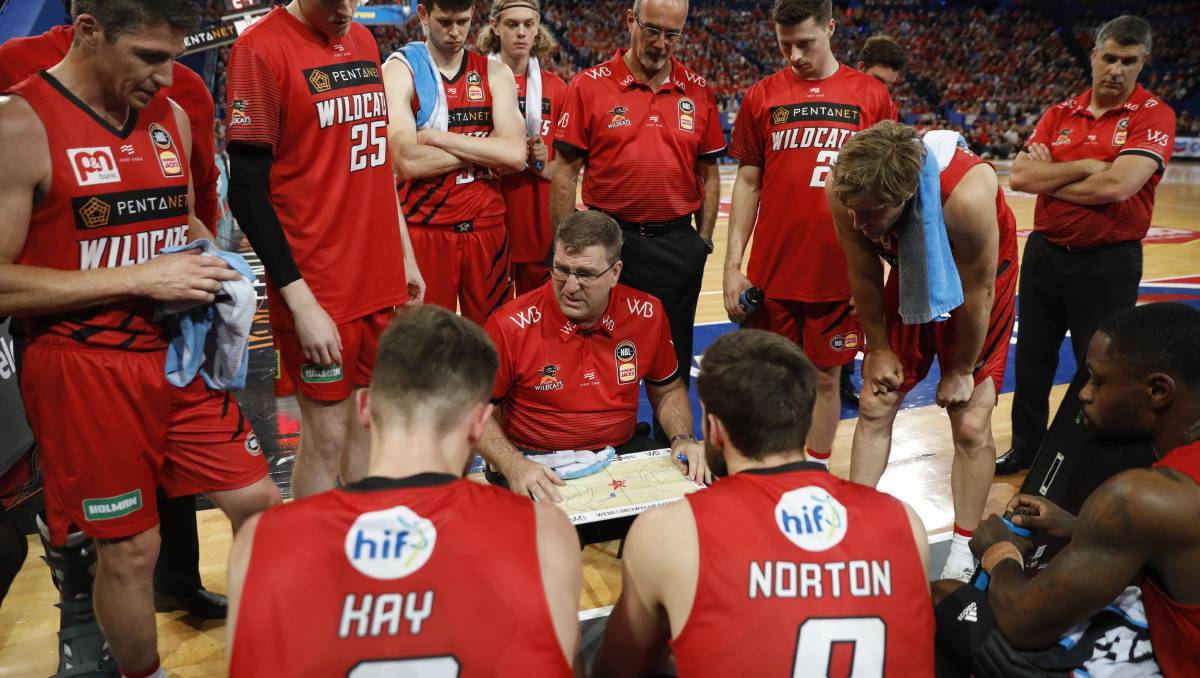
I was first introduced to the Flex Offense as a simple continuity that required players to stick to a pattern and wait for a layup to present itself.
As a player, I thought it was boring and restrictive. As a coach, I only see Flex action as a part of a set or occurring randomly in motion.
That was until I started watching the Perth Wildcats from the 2020-21 NBL season…
Trevor Gleeson and the Wildcats provided me with an education on the Flex Offense through watching them in action that has changed my perspective. The pattern provides a structure through which players can explore their collective creativity and punish defensive missteps with multiple solutions.
I saw the structure as an inhibitor to collective creativity – not the foundation for it.
In this post, I thought that articulating and sharing the progression of basic options I saw from the Wildcats within that structure would be a valuable exercise for me – and maybe even give coaches something to think about too.
Here we go, Flex Offense 101 – courtesy of your guest presenters, the Perth Wildcats.
The Flex Pattern
One pass initiates two screens.
Rinse and repeat.
That’s pretty much it!
The basic pattern of the Flex Offense is quick to learn which makes it an attractive base for coaches with limited practice time as well as for coaches wanting to dive deep into read and react concepts.
With 4 Out spacing, a slot-to-slot pass initiates the action. The ‘Flex Screen’ (or Rip) occurs a step off the block, allowing the cutter above or below the screen. This action is immediately followed up by a down screen set near the elbow after which the screener pops out to the wing.
Repeating this action allows all players to play in all areas of the offence which can be great for skill development.
“If you can get something better than the play, screw the play!”
– Don Nelson
Using a quick, continually revolving offensive structure allows players the opportunity to gain experience within that environment and to explore the freedom they can find within their responsibility to their teammates.
Flex Entry
As an entry to create flow into the offence or as a pressure release against defenders denying the initiating pass, the Wildcats used a dribble entry to vary their starting point.
They even get a sneaky backdoor cut for a layup from time to time too.
Scoring off the Rip
The most basic option (and one of the first looks for any perimeter player that receives that initiating pass) is to look at the cutter coming off the Flex/Rip screen to the basket.
Only a small advantage is needed to create a layup or a deep-paint catch as you can see in the video below.
Scoring off the Down Screen
Without an easy layup opportunity from Flex’s staple option, the Wildcats showed multiple scoring solutions in the down screen portion of the Flex Offense. Shooters flying off this down screen can create for themselves or force defenders into decisions that can open up advantages for others.
“You set screens for one reason. To make defenders think”
– Hubie Brown
It is on the down screen where Perth’s most basic choices begin to open new worlds of possibilities open to the two players involved in the screening action.
Step-up Screen
Instead of popping out to the wing, post players can turn to post up a size advantage or follow their screen with a step-up screen to allow guards to attack an empty corner.
The ensuing two-man game often terminates the possession but could easily flow back into the pattern of the Flex Offense with any slot-to-slot pass.
Get Action
A logical progression of options for players less comfortable using on-ball screens is to use the ‘Get’ action. Elite shooters use this hand back to create space for cutting to the basket or to the ball where dribble handoff concepts like The Keeper are all in play.
But what if the down screen was to be blown up and any reception to the slot is denied by the defender – is the offence out of options?
Nah, the Wildcats flow right into their “get actions” with this blind pig that looks like it’s straight out of the 1993 Chicago Bulls playbook.
Back Cut
If players receiving the down screen for Perth are overplayed, a back cut to the basket opens a layup or post-up potential for themselves but it often creates an advantage for the popping screener. This is a great way to attack the top-block and provide a solution to combat aggressive defenders.
If nothing comes of this back cut, I see two options that speak to the freedom available within the Flex Offense. The players involved can stay engaged in two-player action or – after swinging the ball – they have just switched their roles in the pattern for the next time around.
A deep understanding of the system by all parties allows for such a high degree of autonomy and creativity in these read-and-react situations.
Advance Pass
As help defenders are navigating screens or relaxing after neutralizing a down screen, post players in the slot can use a short advance pass to the wing to create the same two-player action – just at a different angle.
With one whole side of the court occupied by the three players involved in the Flex action, disrupting the rhythm of the Flex by way of this advance pass is a weapon that Perth seemed to use sparingly, but with a high return.
There is plenty of fun to be had with these actions in the introductory Flex Offense masterclass from the Perth Wildcats. These options provide the framework for a host of other player and coach-lead options, counters, and solutions for defensive adjustments that I’m excited to explore in a future post.
In the meantime, for more Flex Offense 101 from Trevor Gleeson and the Wildcats, check out this episode of the Basketball Immersion where Trevor dives into some more details.
Hope this adds some value.






